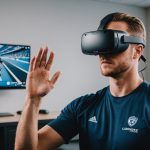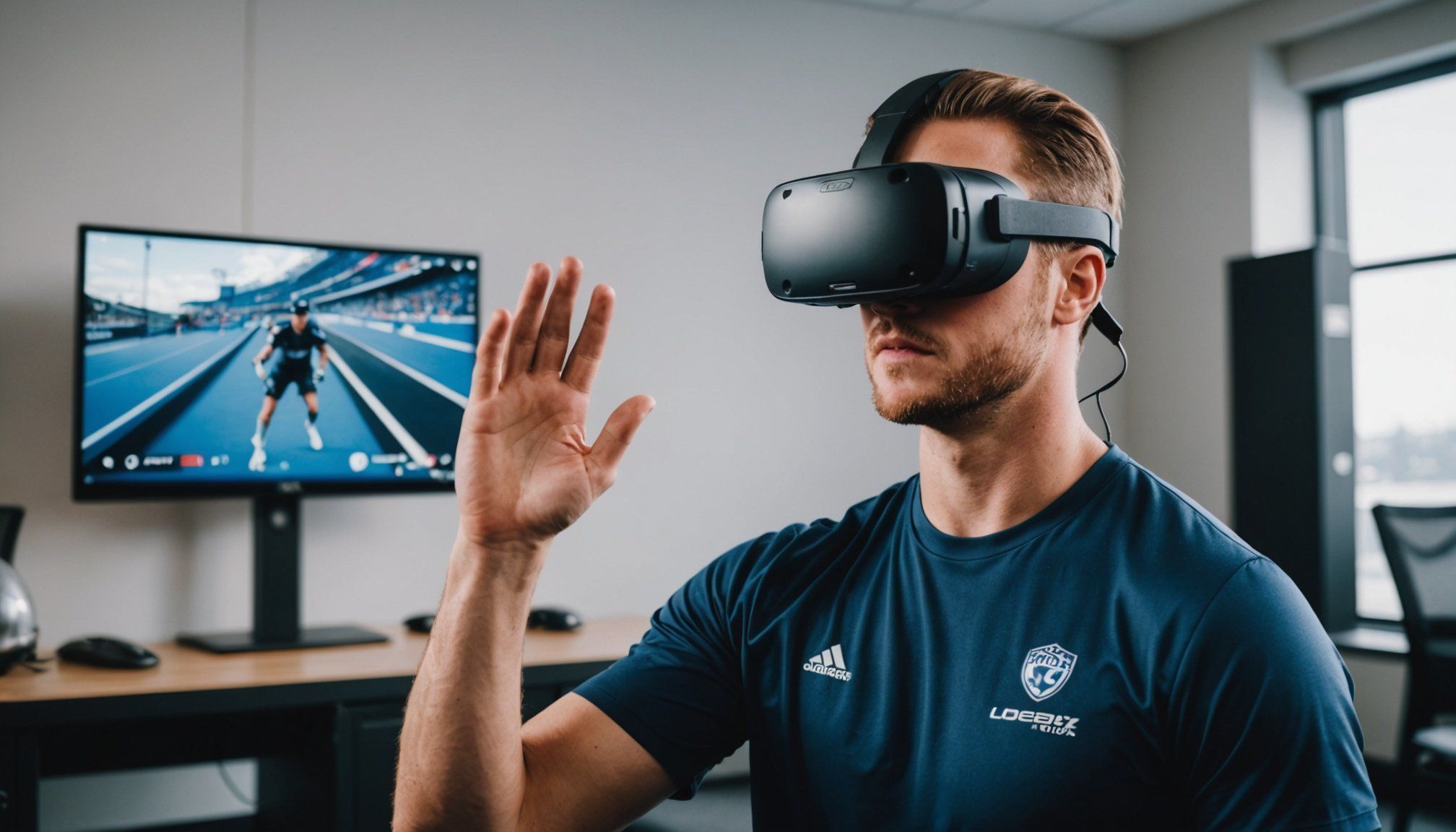Overview of Virtual Reality Cognitive Training
Virtual reality cognitive training has emerged as a breakthrough method for enhancing cognitive skills, particularly in sports. By immersing athletes in a digitally controlled environment, VR cognitive training aims to improve mental abilities essential for high-level performance. This encompasses skills such as decision-making, concentration, and coordination, essential for excelling in competitive sports.
VR in Sports
The evolution of VR technology has significantly transformed the landscape of sports training. Initially, VR was predominantly used for entertainment and gaming; however, its application has expanded into the sports sector over the years. This technological progression allows for more precise and adaptable training modules that mirror real-world scenarios athletes might encounter.
This might interest you : Unifying forces: the influence of social media on team cohesion in professional sports
Importance of Cognitive Training
For athletes, honing cognitive faculties is just as crucial as physical training. Cognitive training through VR enables athletes to slave complex scenarios, enhancing their mental acuity and response time. This cognitive enhancement is vital for sports, where split-second decisions and precise timing can be the difference between victory and defeat. By integrating VR into their regimen, athletes can improve their strategic thinking, adaptability, and responsiveness, ultimately leading to improved performance in their respective sports.
Benefits of VR Cognitive Training for High-Speed Sports
Virtual reality cognitive training offers numerous benefits for athletes, particularly those involved in high-speed sports. One major advantage is the improvement in reaction times and decision-making. Athletes can engage in virtual scenarios that replicate the fast-paced action they experience in real competitions. This environment enhances their ability to make swift, strategic decisions, particularly vital in sports like hockey or basketball.
This might interest you : Unifying forces: the influence of social media on team cohesion in professional sports
Additionally, VR training significantly enhances visual and spatial awareness. By immersing athletes in realistic simulations, VR helps improve their ability to perceive multiple elements simultaneously, crucial for navigating high-speed environments. This training ensures athletes can respond appropriately to rapidly changing situations, maintaining peak performance levels.
Psychological benefits are also notable. VR cognitive training assists in building an athlete’s confidence and stress management skills. Experiencing diverse scenarios in a controlled setting allows athletes to develop coping mechanisms for real-world pressures. This mental resilience is essential for maintaining composure during critical moments of competition.
In essence, VR cognitive training bridges the sensory and psychological aspects, offering a comprehensive tool for enhancing performance in high-speed sports. By nurturing both mental and physical agility, athletes are better prepared to excel in their respective disciplines.
Visual and Interactive Elements in VR Cognitive Training
Incorporating visual and interactive elements is a cornerstone of effective virtual reality cognitive training. In this digital age, these elements are not mere add-ons; they hold intrinsic value in heightening engagement and enhancing learning outcomes.
Types of Visual Content
Visual content forms the bedrock of VR training sessions. These visuals range from basic geometric shapes to lifelike environments that replicate sports settings. By accurately simulating real-world conditions, athletes gain exposure to varied and realistic scenarios. Interactive simulations place athletes in engaging setups where they can practise and refine their skills in a risk-free environment.
Interactive Simulations
Interactive simulations in VR cognitive training foster active participation and immediate feedback. By immersing users in sports-specific scenarios, these simulations simulate pressures of actual competitions, allowing athletes to hone their reactions and decision-making processes effectively. For instance, VR platforms enable athletes to engage in scenarios like penalty shootouts or tactical exercises, closely mirroring their on-field counterparts.
Successful Platforms
Leading VR training platforms employ cutting-edge tools for sports applications. Examples include platforms that replicate high-speed sports dynamics, featuring real-time analytics and feedback. These features encourage immersive learning experiences, ensuring athletes acquire both mental agility and strategic prowess necessary for competitive sports.
Case Studies Supporting the Effectiveness of VR Cognitive Training
Virtual reality training has steadily gained traction, boasting empirical evidence to support its claims. From football pitches to Formula 1 racing tracks, VR demonstrates its versatility across diverse sports.
Example 1: Football Training Programs
In football, teams employ VR cognitive training to simulate match-like situations. It allows athletes to practice decision-making under pressure. Performance metrics often reveal improved reaction times and spatial awareness post-training. Players report increased confidence and a deeper understanding of game dynamics, leading to better on-field performance.
Example 2: Basketball Skill Development
Basketball players benefit from VR by refining skills and anticipation abilities. Simulated environments emphasize hand-eye coordination and quick decision-making. These exercises translate to enhanced performance, notably in shooting accuracy and defensive strategies.
Example 3: Formula 1 Driver Training
Formula 1 leverages VR training to improve drivers’ mental acuity and adaptability. VR scenarios allow drivers to analyze complex track layouts and anticipate potential game-changing incidents. Metrics indicate enhanced cognitive enhancement, crucial for high-stakes races. Testimonials from drivers highlight VR’s role in sharpening focus and decision-making efficiency.
In sum, these case studies illustrate VR’s potential in revolutionizing athletic training through targeted, measurable improvements.
Expert Opinions on VR Cognitive Training in Sports
Experts in the field of sports science and psychology have expressed strong support for VR cognitive training, highlighting its transformative impact on athletic performance. According to sports psychologists, VR offers a unique opportunity to enhance cognitive abilities under simulated stress, thereby improving athletes’ decision-making skills. These experts believe that VR’s immersive nature plays a crucial role in preparing athletes for the psychological pressures of real competitions.
Coaches, too, see the value in integrating VR. They appreciate how VR training insights can be tailored specifically to match the sport’s requirements, allowing them to create personalized training regimens. Feedback from coaches often highlights VR’s role in boosting athlete endorsements, as players experience tangible improvements in mental preparedness and strategic capabilities.
Recent research underscores the efficacy of VR in training; studies provide evidence of its success in fostering cognitive enhancement across various sports. Expert recommendations frequently focus on merging VR with traditional training methods. They caution, however, against replacing conventional practices entirely with VR, advocating instead for a balanced approach that maximizes benefits while maintaining established training foundations.
Potential Challenges and Limitations of VR Cognitive Training
Virtual reality cognitive training, while revolutionary, presents certain challenges and limitations that need addressing for optimal implementation. A primary concern is the technical limitations of VR technology. High costs and the need for advanced machinery can make VR training inaccessible for some sports teams, especially in amateur or less-funded settings.
Furthermore, there’s the challenge of appropriate implementation. Without proper guidance and training from experienced coaches, VR’s benefits may not be fully realised. Coaches must be trained not only to operate VR systems but also to integrate them seamlessly into existing training regimens. This requires substantial investment in time and resources.
Another significant concern is the potential for over-reliance on technology. Athletes might become too dependent on VR simulations, possibly neglecting traditional training methods that develop essential physical skills. The balance between virtual and physical training must be carefully managed to ensure comprehensive development.
Additionally, there are accessibility issues with VR training. Not all athletes may have access to VR equipment due to geographical or financial constraints, highlighting the need for more inclusive approaches to sports training technology. Addressing these challenges is crucial for maximising VR’s potential in enhancing sports performance.









